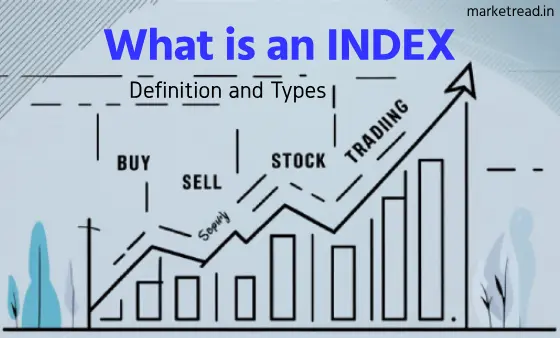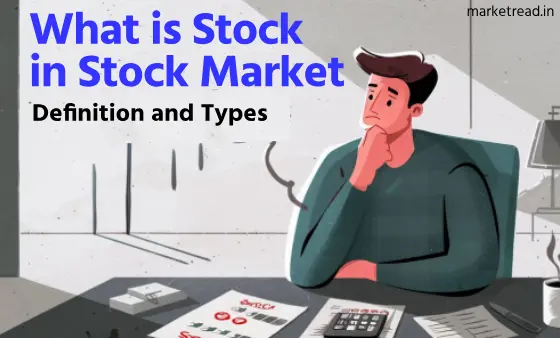What is an IPO?
If you’re new to the stock market, you must have heard about companies launching IPOs at some point. Perhaps someone even suggested investing in an IPO. However, you might not fully understand what an IPO is. Some say you should avoid investing in IPOs, while others claim that investing in an IPO can double your money in a single day. But is that true?
You are not alone. The world of the stock market, especially for newcomers, can make it a bit difficult to understand IPOs. However, understanding IPOs is not that much difficult. This article will explain to you in simple words what an IPO is, how it works, and whether or not it is beneficial for you to invest in it.
Meaning of IPO
IPO means “Initial Public Offering”. It means offering stocks/shares of a company to the general public for the first time. When a private/public institution or company wants to raise funds for their business expansion or to fulfil other financial needs. It offers shares of the company to the public for the first time in the market. This offering is called an IPO (Initial Public Offering).
IPOs are brought to the market for what reasons and how?
An IPO (Initial Public Offering) is brought to the market for two main reasons. Whenever a businessperson thinks that their business is performing well in a particular period. and has the potential to perform even better in the future, they come with the thought of expanding and growing their business. In such a case, the businessperson approaches SEBI (Securities and Exchange Board of India) to register their business and to bring an IPO to the market. This means that the businessperson offers their company’s ownership to the general public. Let’s understand this with the example.
- Let’s assume there is an “ABC” named company that is performing quite well in the market. People like the company’s products, and hence there is an increase in demand for products. This builds confidence in the company’s owner, the founder, that there is a possibility of growth in the company. Therefore, the company’s owner makes plans to expand their business. However expanding the business requires a large amount of capital, i.e., money.
- Now, where there is a need for a large amount of money, the company’s owner decides to present some ownership of the company to the general public. This means that the “ABC” company decides to raise funds through an IPO.
- ABC Company’s owner evaluates their company’s value through a banking investment institution and determines the initial public offering (IPO) price. Subsequently, the company’s owner registers the company on the stock exchange board and provides all relevant documents and information about their business. In our country, SEBI (Security Exchange Board of India) is the sole board where companies get listed before entering the stock market.
- The stock exchange board conducts a thorough check of the company, including its duration of operation and current status, financial status and other details. Afterwards, the company presents its IPO in the primary market at the specified price. SEBI makes the company’s information available to the general public, for people to analyze the company’s history and future growth prospects before making an investment decision.
- In the final stage, investors invest in “ABC” Company after assessing its prospects, and the invested money goes directly to the company.
The Process of an IPO
An IPO involves several steps and requires careful planning and execution.
1. Preparation:
Before going public, a company needs to evaluate its financials, business model, and growth prospects. It may need to restructure its operations, appoint an underwriter, and comply with regulatory requirements.
2. Hiring Professionals:
Companies hire investment banks, lawyers, and auditors to guide them through the IPO process. These professionals provide expertise in areas such as valuation, legal compliance, and financial reporting.
3. Due Diligence:
The company’s financial statements, business operations, legal contracts, and other relevant information undergo thorough scrutiny by the underwriters and regulatory authorities. This process, known as due diligence, helps ensure transparency and accuracy of the information disclosed to potential investors.
4. Pricing and Allocation:
The company, with the help of underwriters, determines the price at which the shares will be offered to the general public. This price is based on various factors, including the company’s financial performance, industry trends, and market conditions.
5. Registration:
For registration, the company requires the filing of a registration statement at SEBI. This document contains detailed information about the company, its financials, risks, and other relevant disclosures. The SEBI reviews the registration statement to ensure compliance with regulations.
6. Roadshow:
Before the IPO, the company and its underwriters conduct a roadshow to generate interest among potential investors. This involves presenting the investment opportunity to institutional investors, analysts, and fund managers. The roadshow helps create awareness and build investor confidence.
7. Going Public:
On the day of the IPO, the company’s shares are listed on a stock exchange, making them available for public trading.
What are the Open Date and Listing Date of that IPO?
When a company presents its IPO, you must have noticed that there are some dates, prices, the number of shares issued, and other details displayed. Along with the company’s name, we are provided information such as Open Date, Close Date, Listing Date, Issue Price, Issue Size, Lot Size, and Exchange. So, what does all this mean, and what do we learn from it?
Announcement Date – This date refers to when a company publicly announces its intention to offer shares of the company to the general public, bringing its shares into the market.
Open Date – On this date, the company’s IPO (Initial Public Offering) is made available to the public for purchase in the market.
Close Date – This date marks the final opportunity to invest in the IPO. It means that if you wish to invest in the IPO, you must purchase it on or before this date. After the close date, the IPO is no longer available for purchase.
Allotment Date – On this date, the company allocates shares to investors.
Listing Date – On this date, the company’s shares become available for trading in the stock market. It signifies that from this date onward, individuals can buy and sell the company’s shares in the open market.
What is IPO Issue Price and Listing Price?
Issue Price – This is the price of an IPO, which the company determines through valuation. We often see this price in price bands like ₹95-₹100, ₹135-₹142, and so on. It means that when we are buying an IPO, our bid should fall within this price range.
Listing Price – When a company’s IPO gets listed in the market, meaning its shares become available for trading in the stock market, the price at which it opens for trading is called the listing price. For instance, suppose a company’s price band was between ₹95 and ₹100. If it is listed for ₹100, and an investment of 1000 shares was made at that price, and on the day of listing, the company’s share opens at ₹150, then the listing price of the company becomes ₹150.
IPO Issue Size and Lot Size
Issue Size – This number represents the total number of shares offered by a company in the market. It indicates how many shares the company has released into the market. This number depends on how much capital the company intends to raise, and it is usually in crores.
Lot Size – This number indicates the minimum number of shares that an investor can buy in an IPO. Just as we can buy a minimum of 1 share in the stock market, similarly in an IPO, this number is fixed, and we cannot buy fewer shares in the primary bid. The lot size is shown to us as 100, 150, 500, 1000, 2000, or even more. This means we cannot invest less than the number shown in the lot size. If we want to invest more than that, we have to do it in multiples of that number.
For example, if a company’s lot size is 1000 and you want to buy more than that, you have to buy in multiples of 1000, such as 2000, 3000, 4000, 5000, and so on.
What is an IPO price band?
Price Band – Along with this, we are also shown the price band, i.e., the range at which we are buying shares. We can place a bid within that price band to purchase it. For example, if a company has set a price band of ₹95 – ₹100, you can place a bid at any price between ₹95 to ₹100 at which you want to buy.
Why you should not buy an IPO on the listing day?
As we understand, it is better to buy an IPO before it comes to trading in the market. Many times, people apply for an IPO but do not get allotted, meaning their application is rejected. Therefore, they think that they will buy it on the day it gets listed in the market.
However, the most important thing to pay attention to is that when any IPO gets listed in the equity market, i.e., becomes available for trading, investing in that share on the first day or the next few days can involve a significant risk because the share price is very volatile in the initial days. Therefore, we should wait for a few days or even months for the right time to invest.
But if you have good knowledge of the market, understand the company’s fundamentals, and comprehend the company’s growth, then you can buy the share at your determined price.
FAQs
What is IPO and how it works?
An IPO, or Initial Public Offering, is a financial instrument by which a private company becomes public by offering its shares on a stock exchange for the first time.
Who gets money from an IPO?
In an IPO, the company itself raises money by selling shares to the public for the first time. This allows them to fund growth, pay debt, etc. Early investors may also be able to sell their shares during the IPO for a profit.
What is the difference between IPO and Stock?
An IPO, or Initial Public Offering, is the first time a company sells its shares to the public. Stocks, on the other hand, are simply units of ownership in any company that already trades on a stock exchange. So, an IPO is the starting point for a stock.




Enjoyed reading through this, very good stuff, thankyou. “Whenever you want to marry someone, go have lunch with his ex-wife.” by Francis William Bourdillon.
I was wondering if you ever thought of changing the layout of your site? Its very well written; I love what youve got to say. But maybe you could a little more in the way of content so people could connect with it better. Youve got an awful lot of text for only having 1 or two pictures. Maybe you could space it out better?